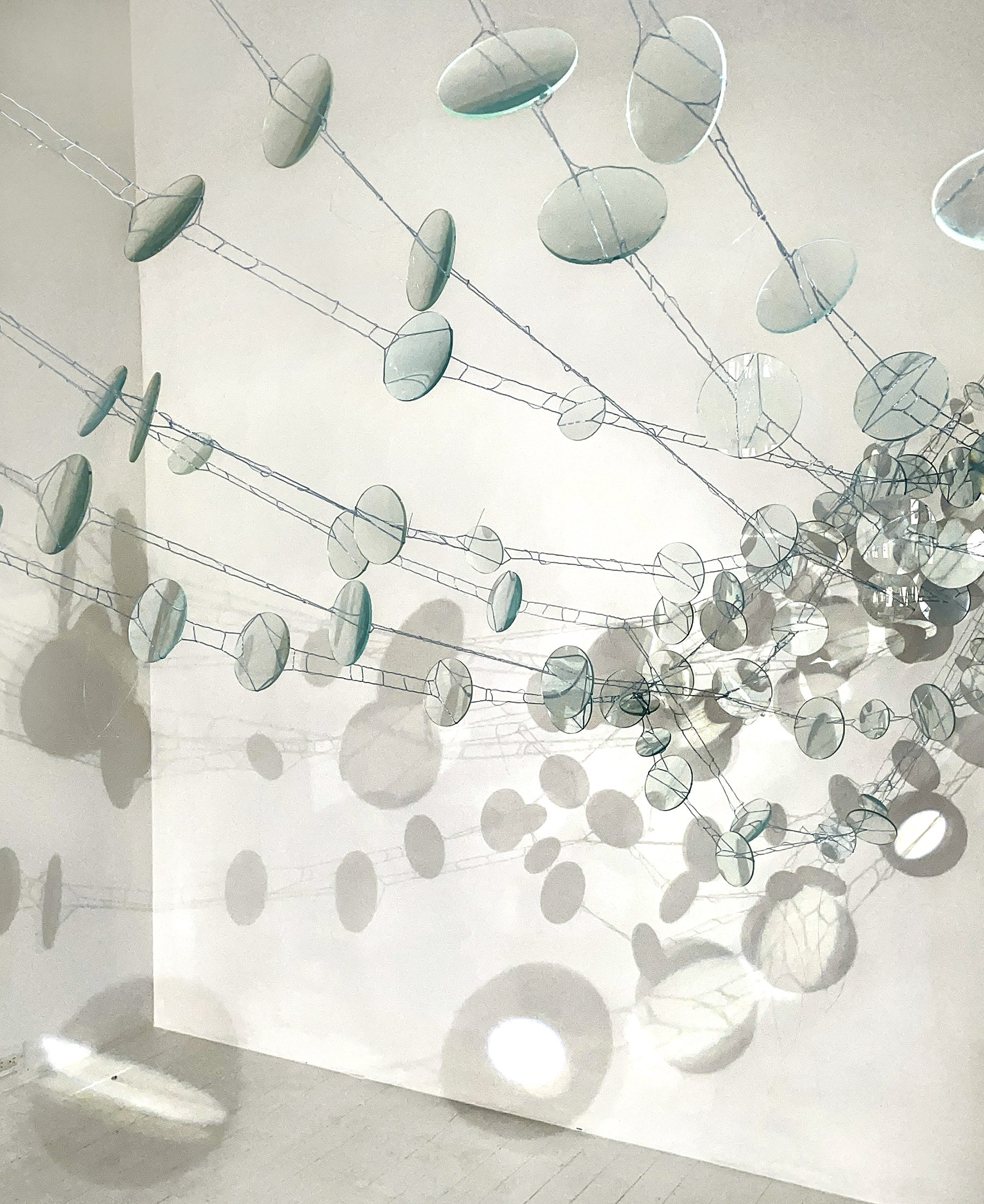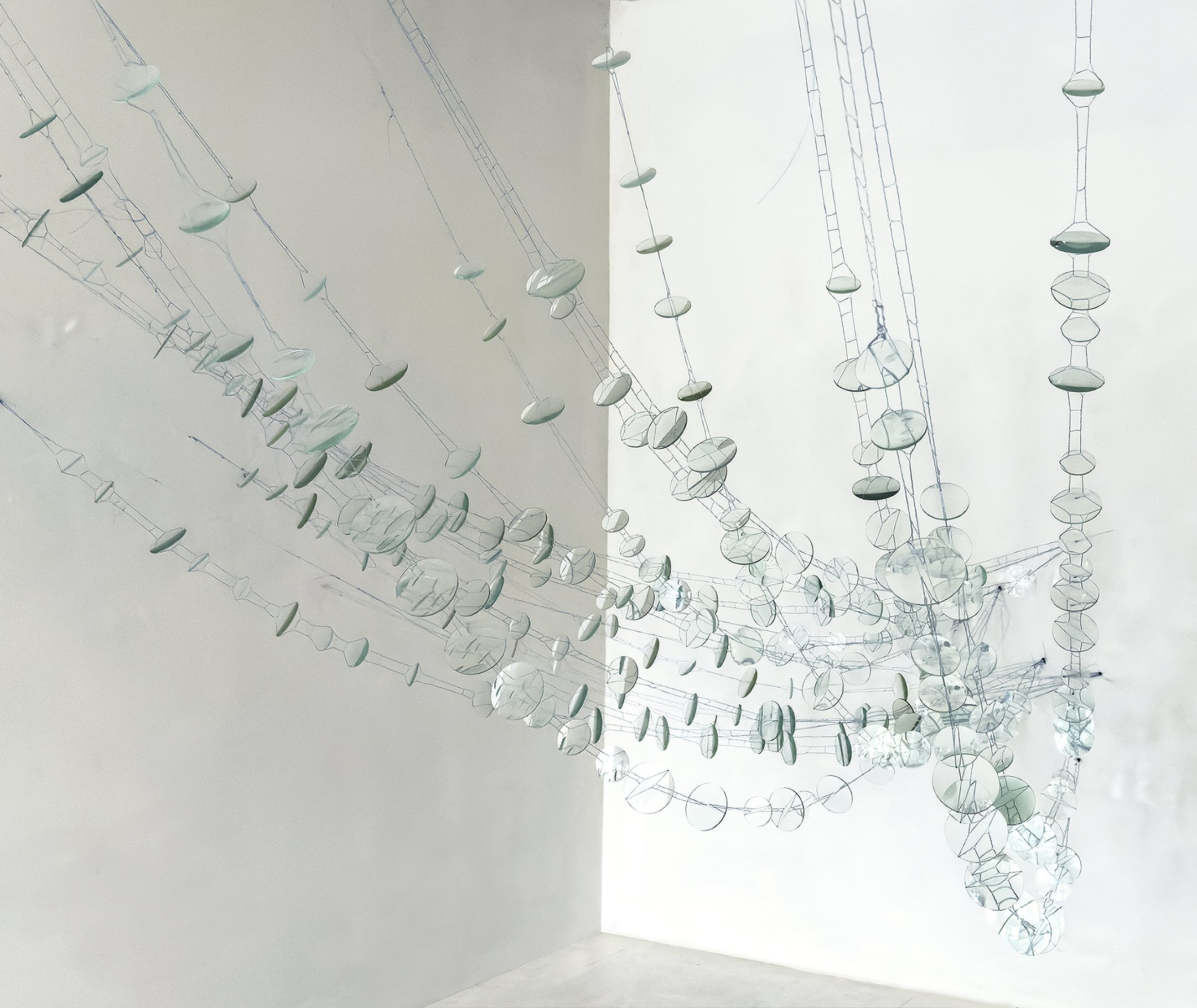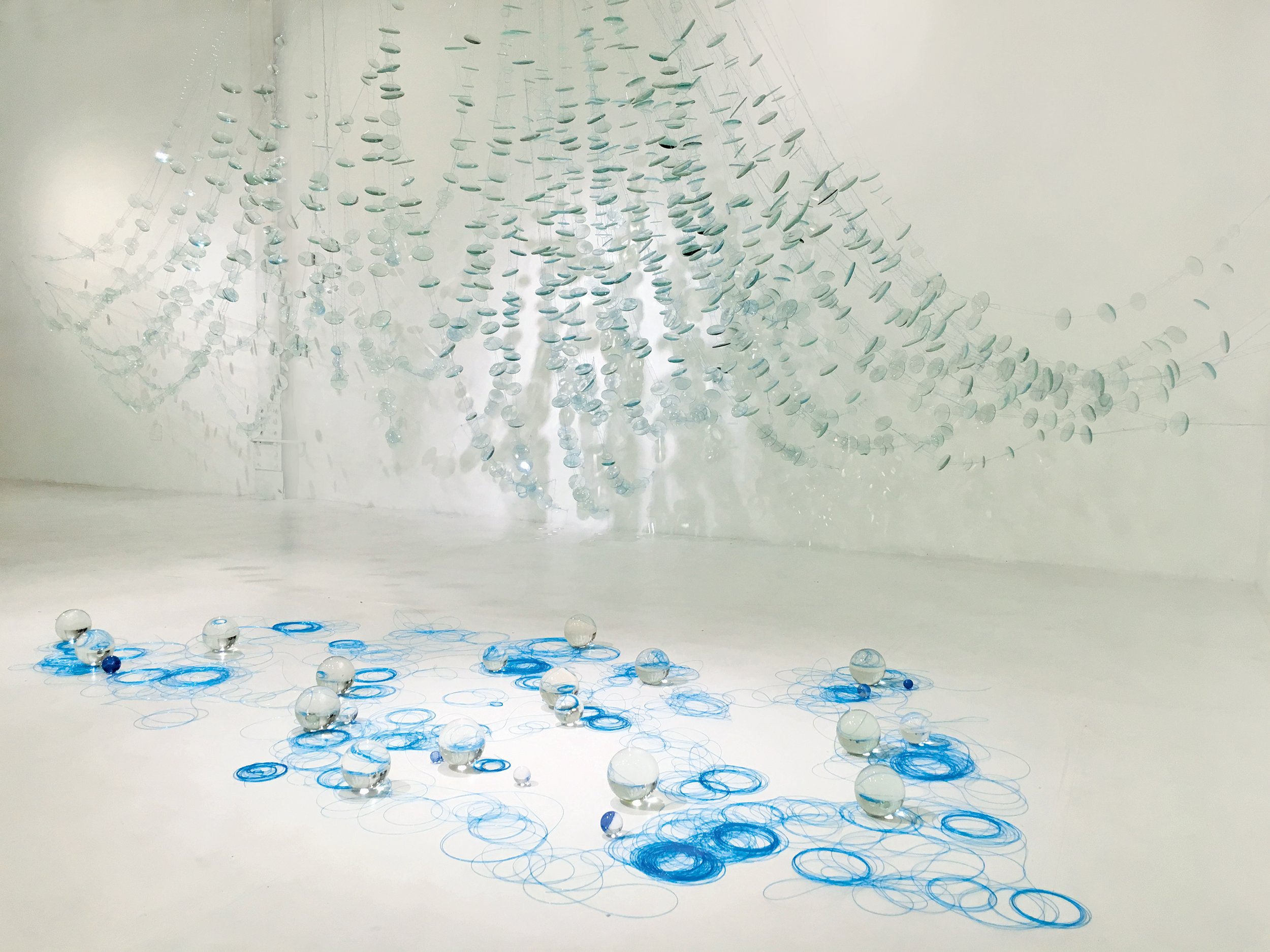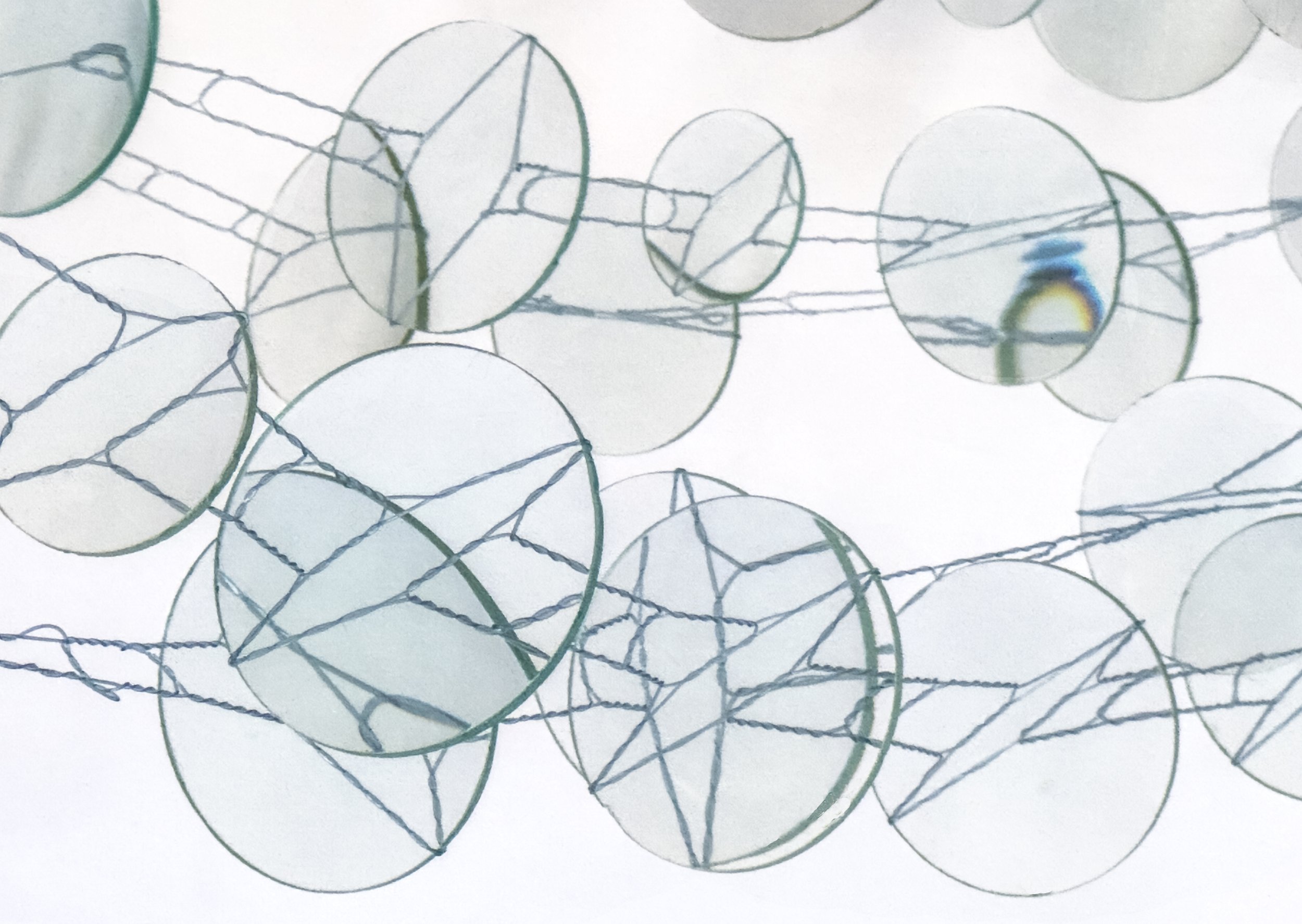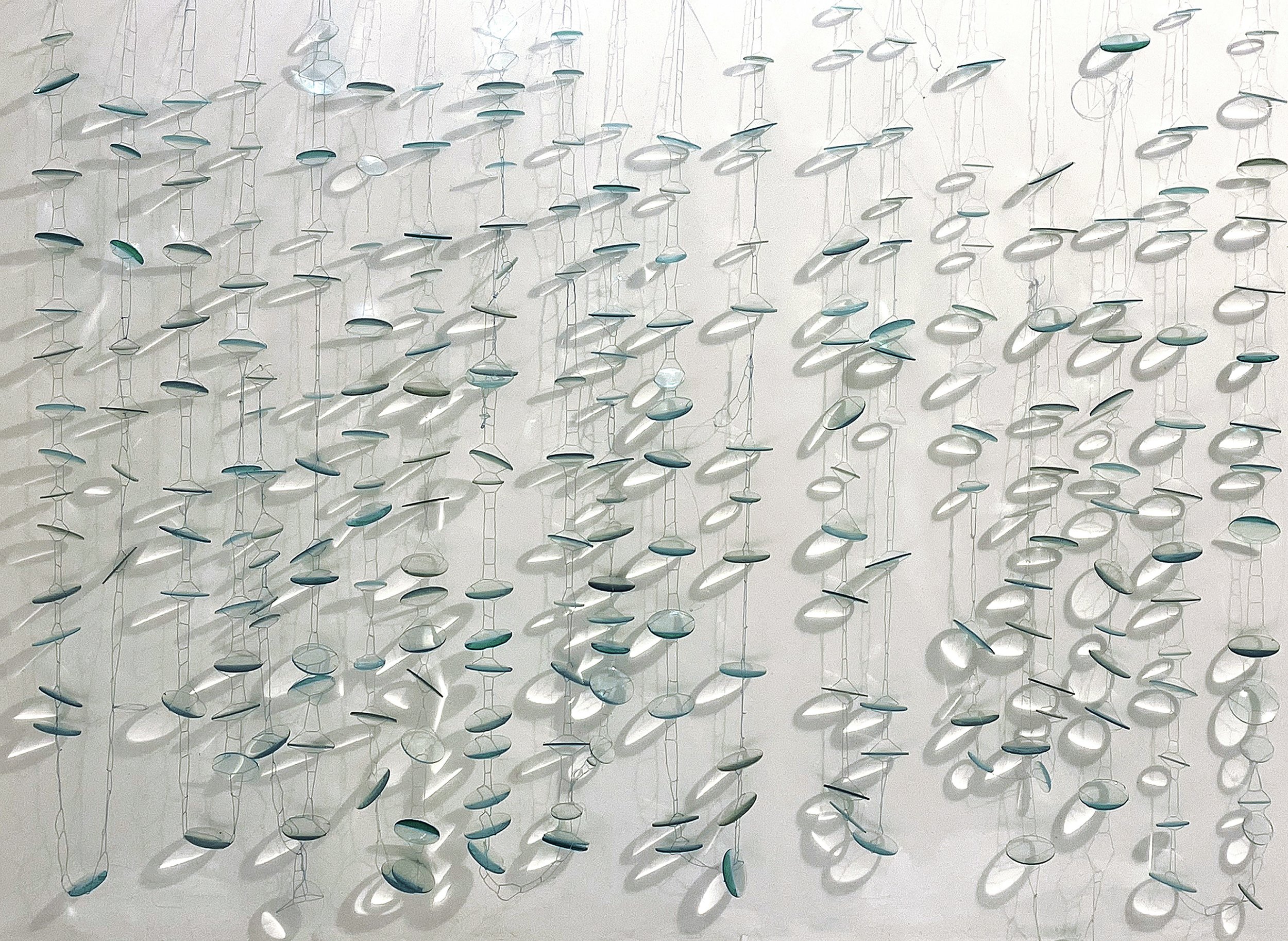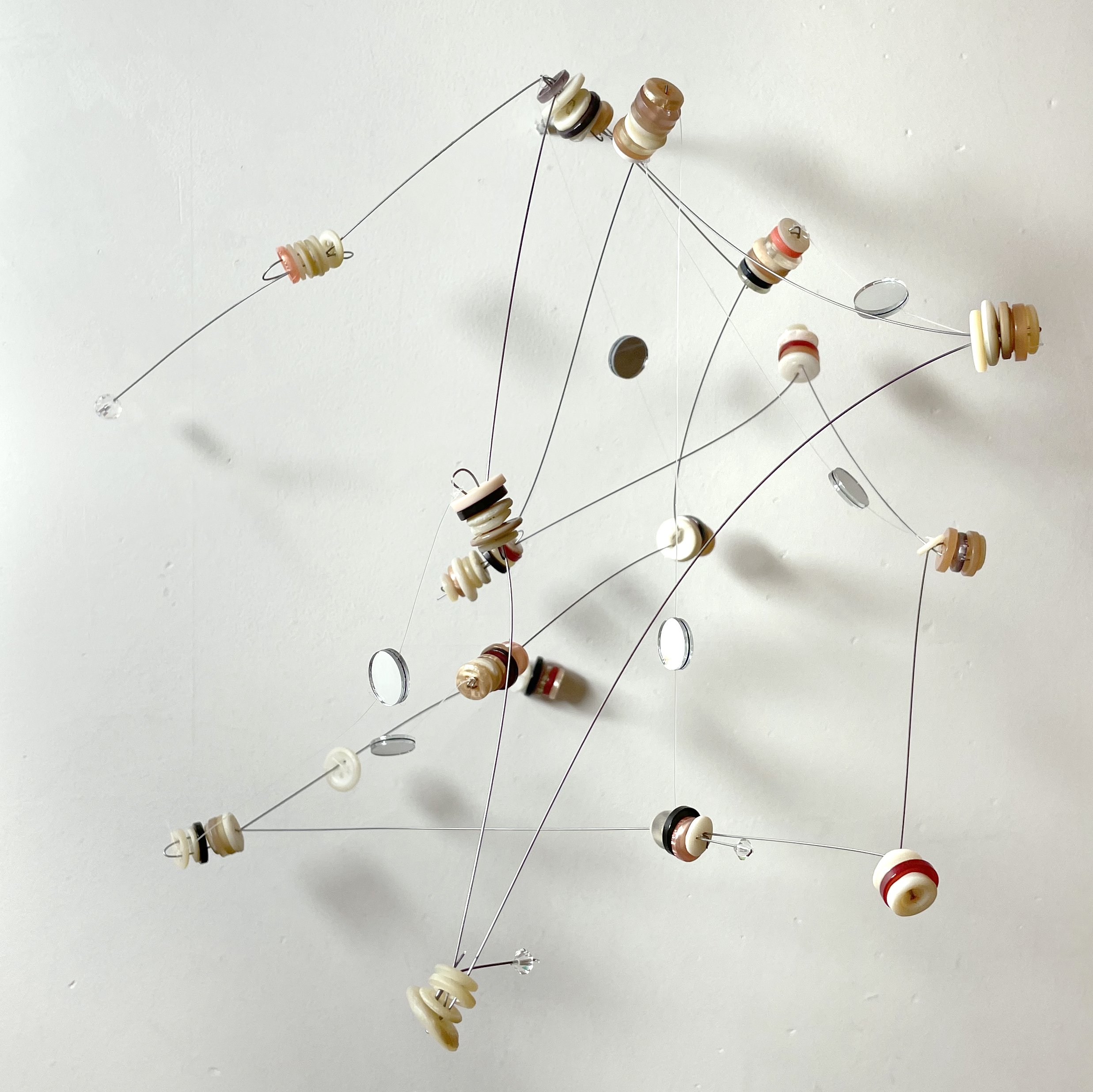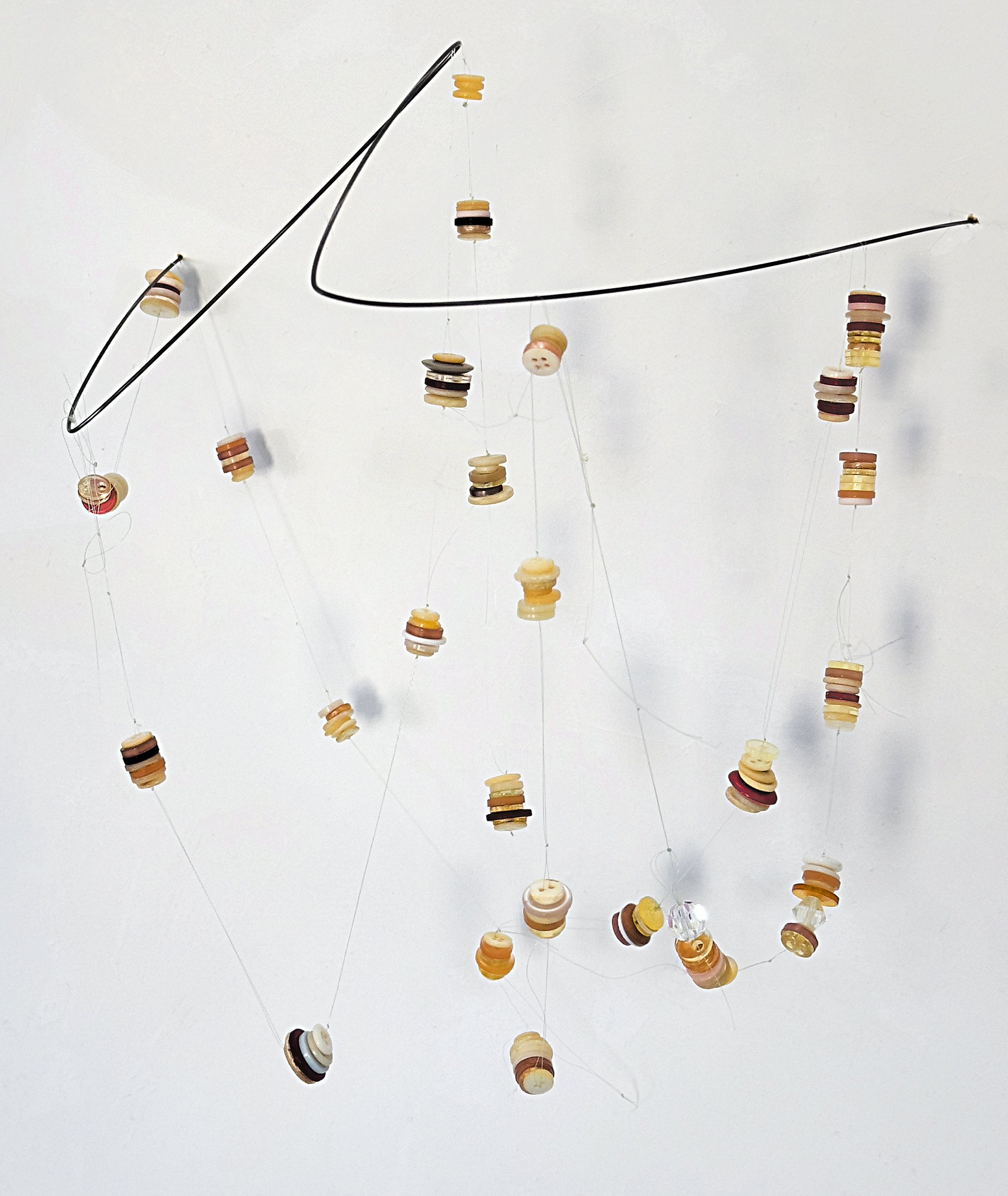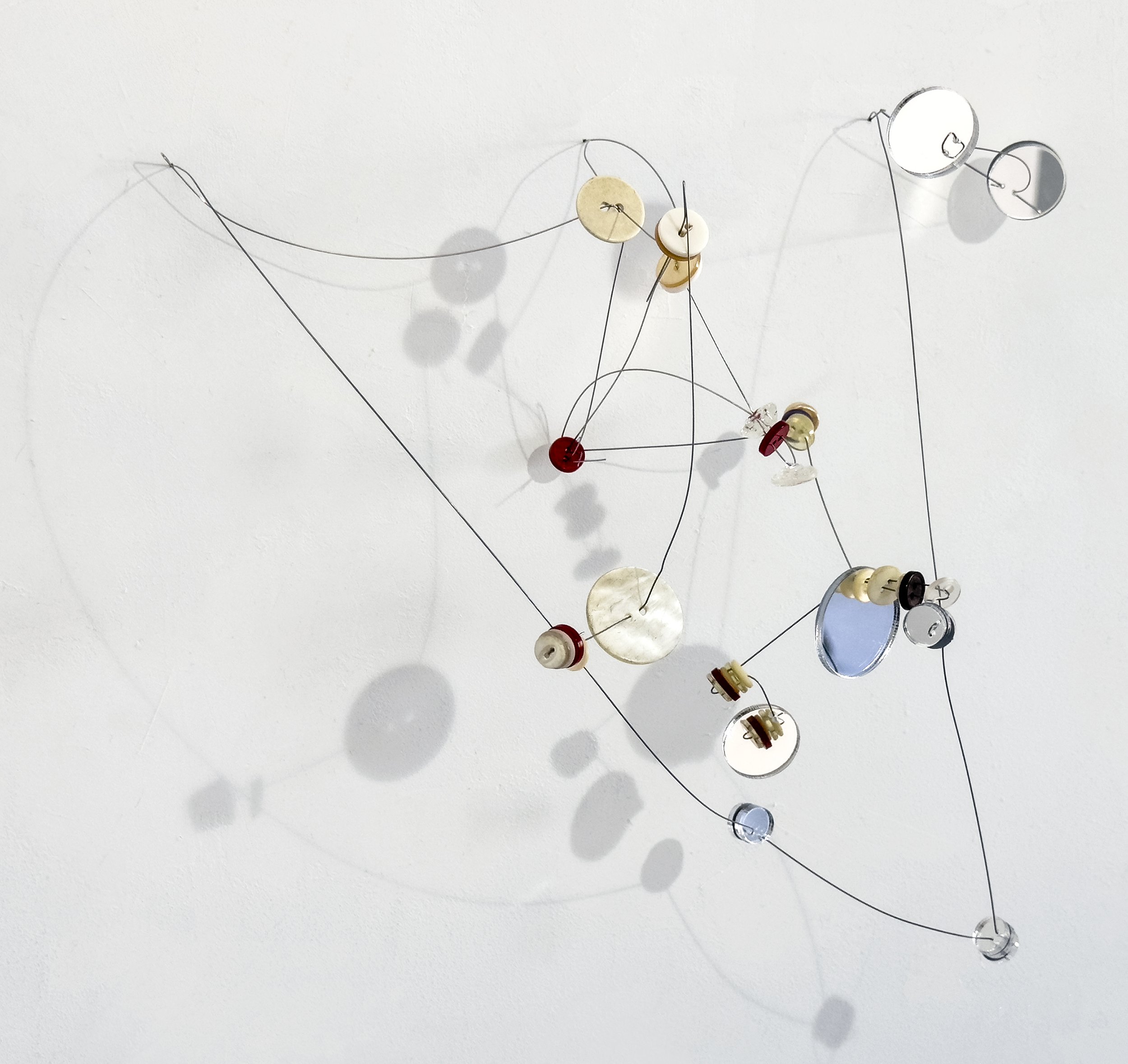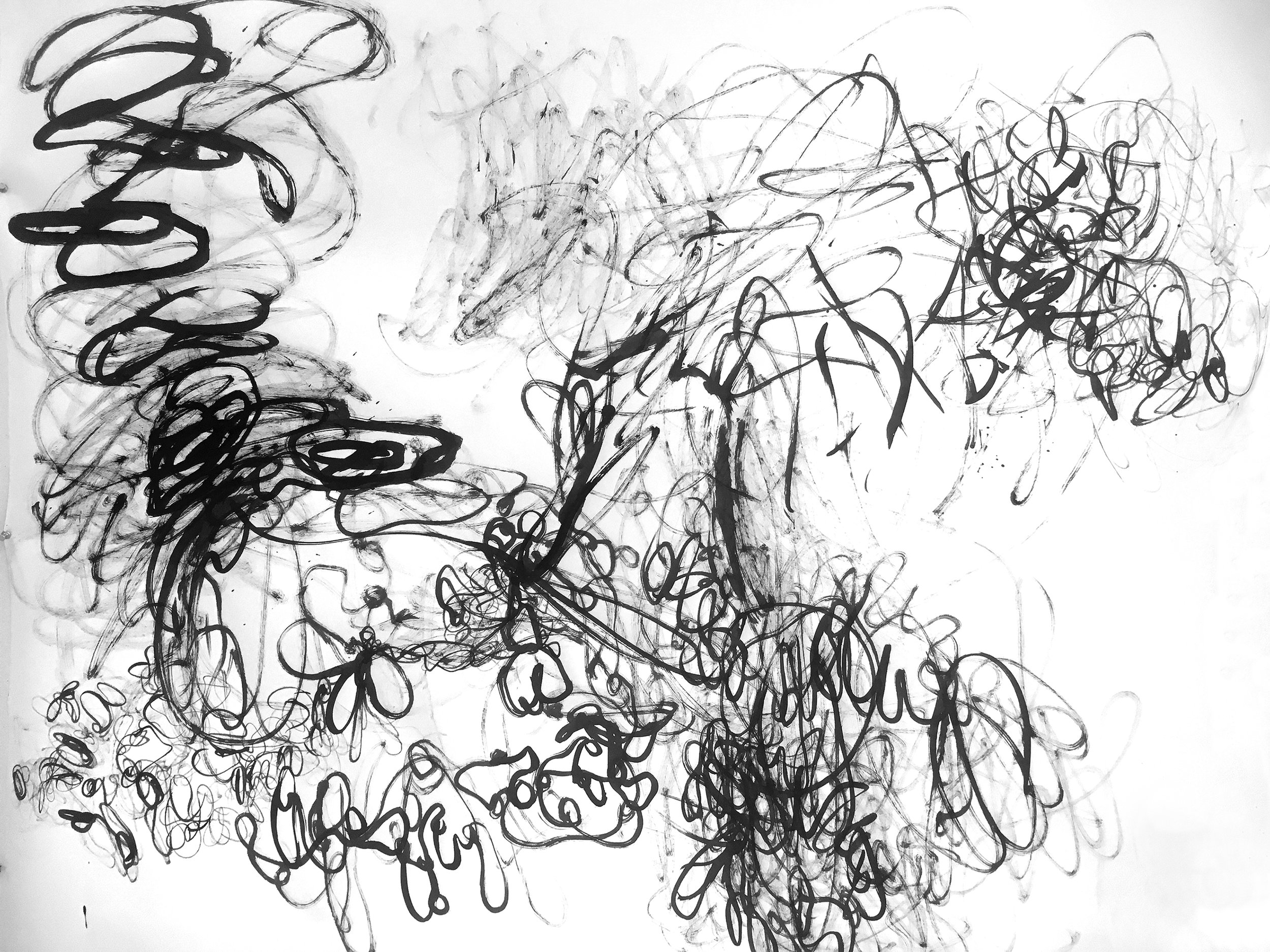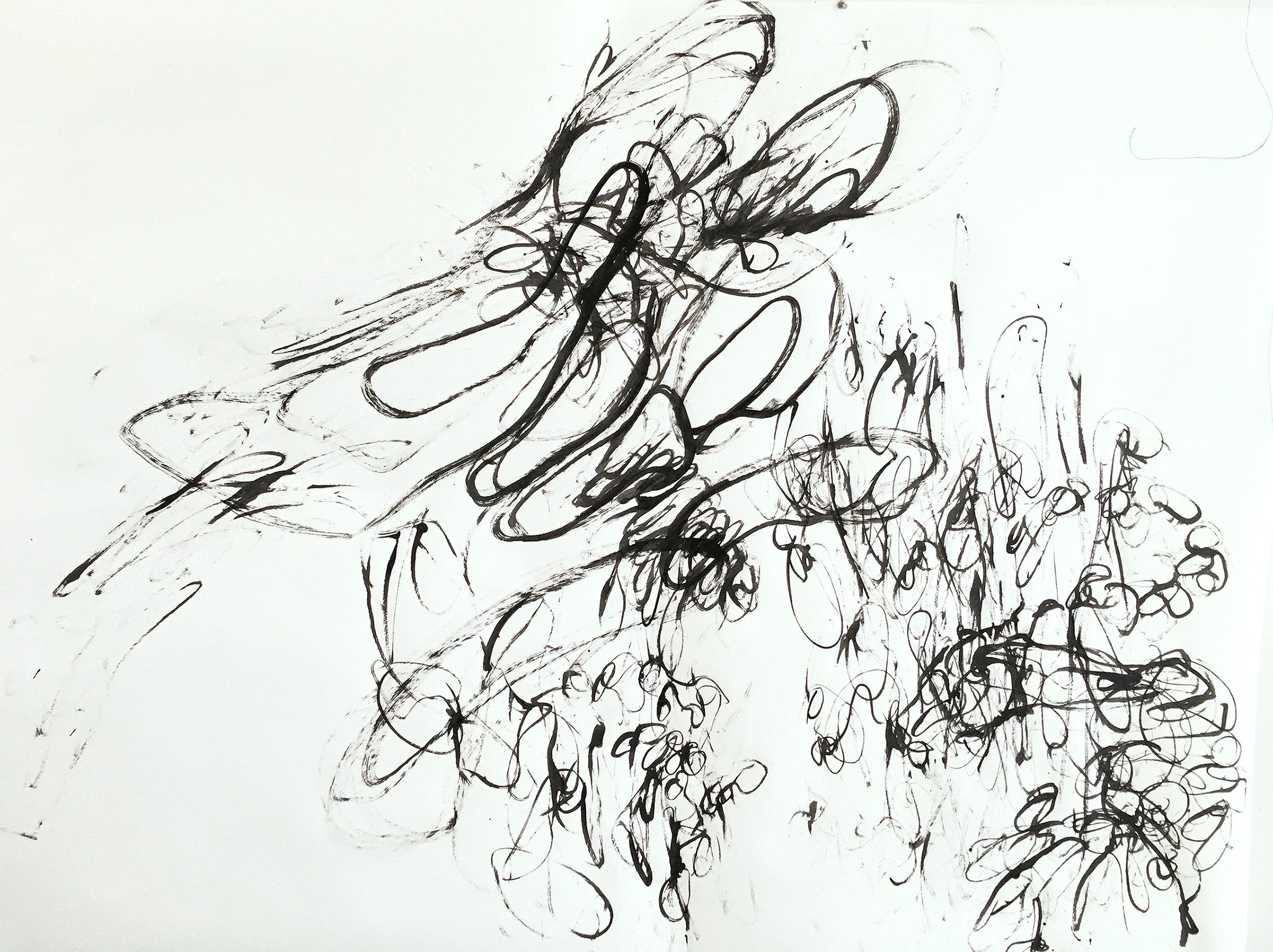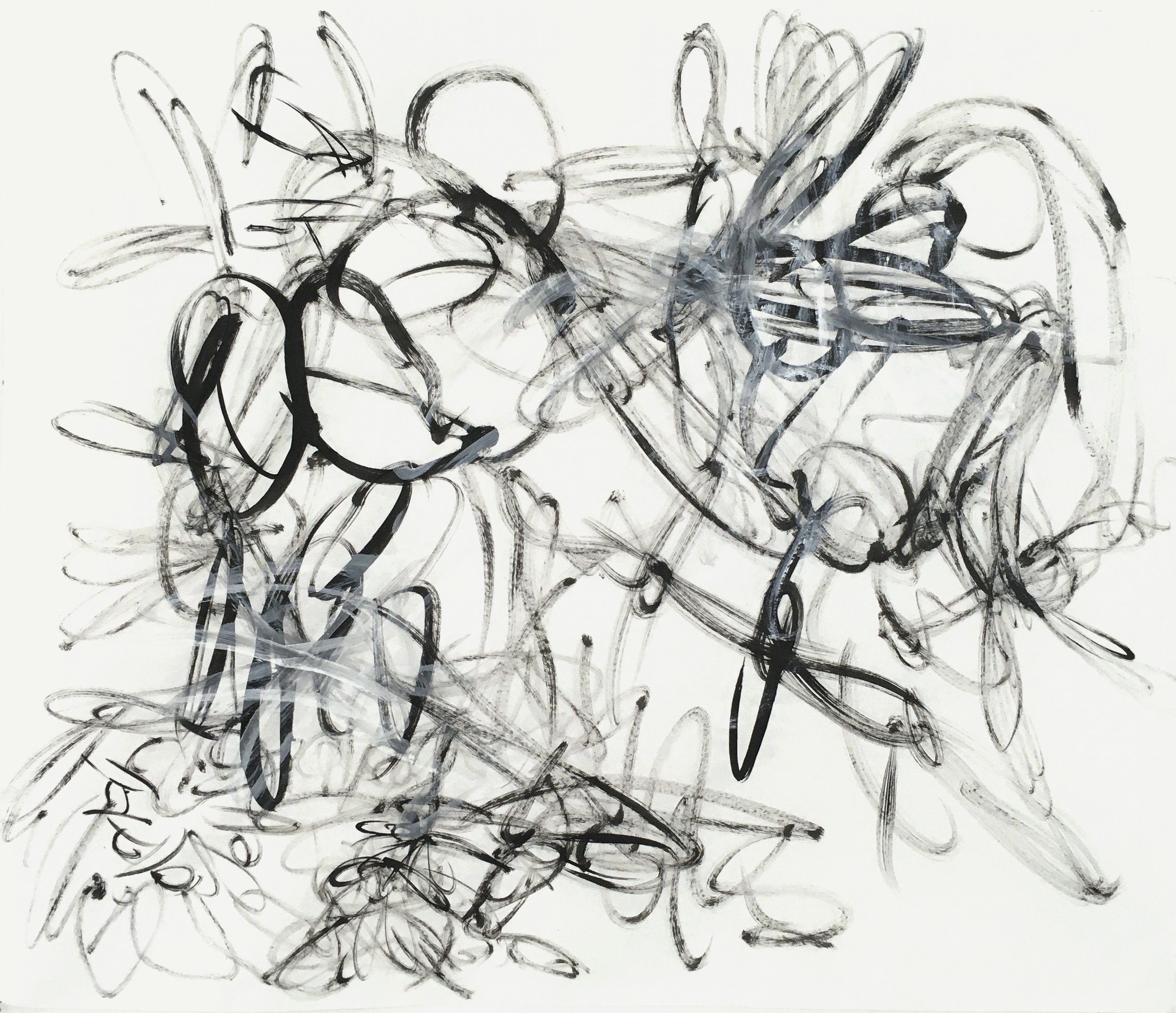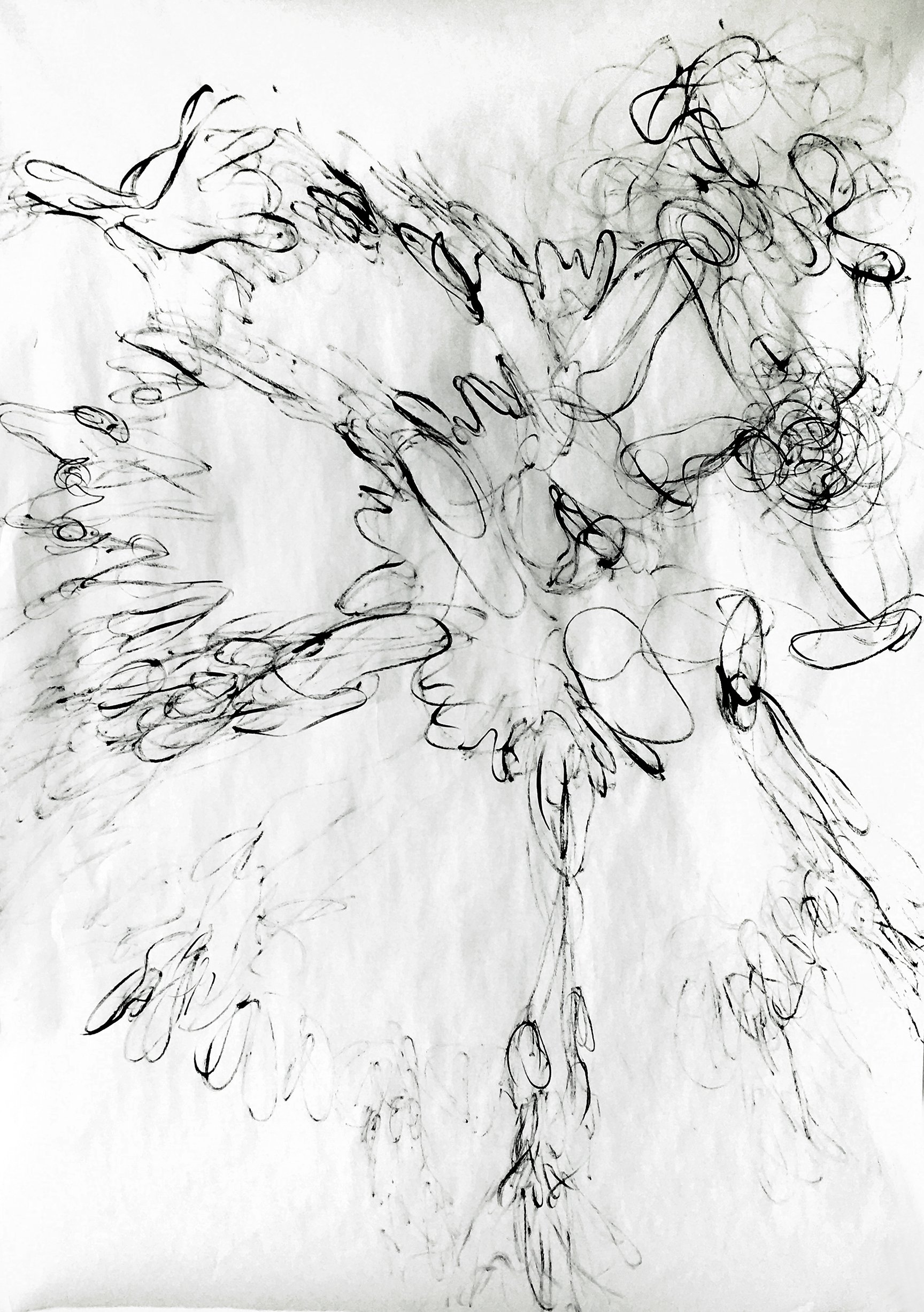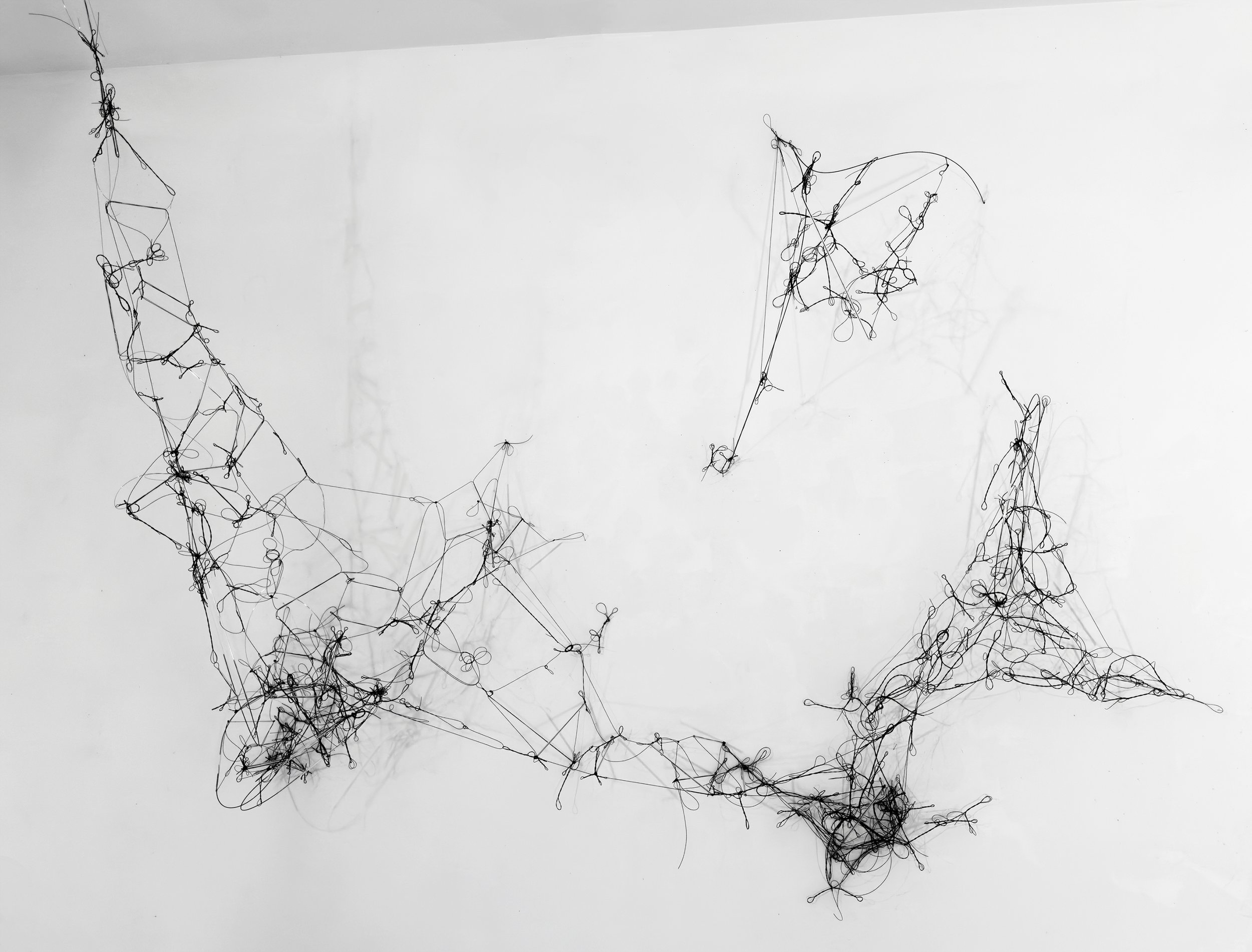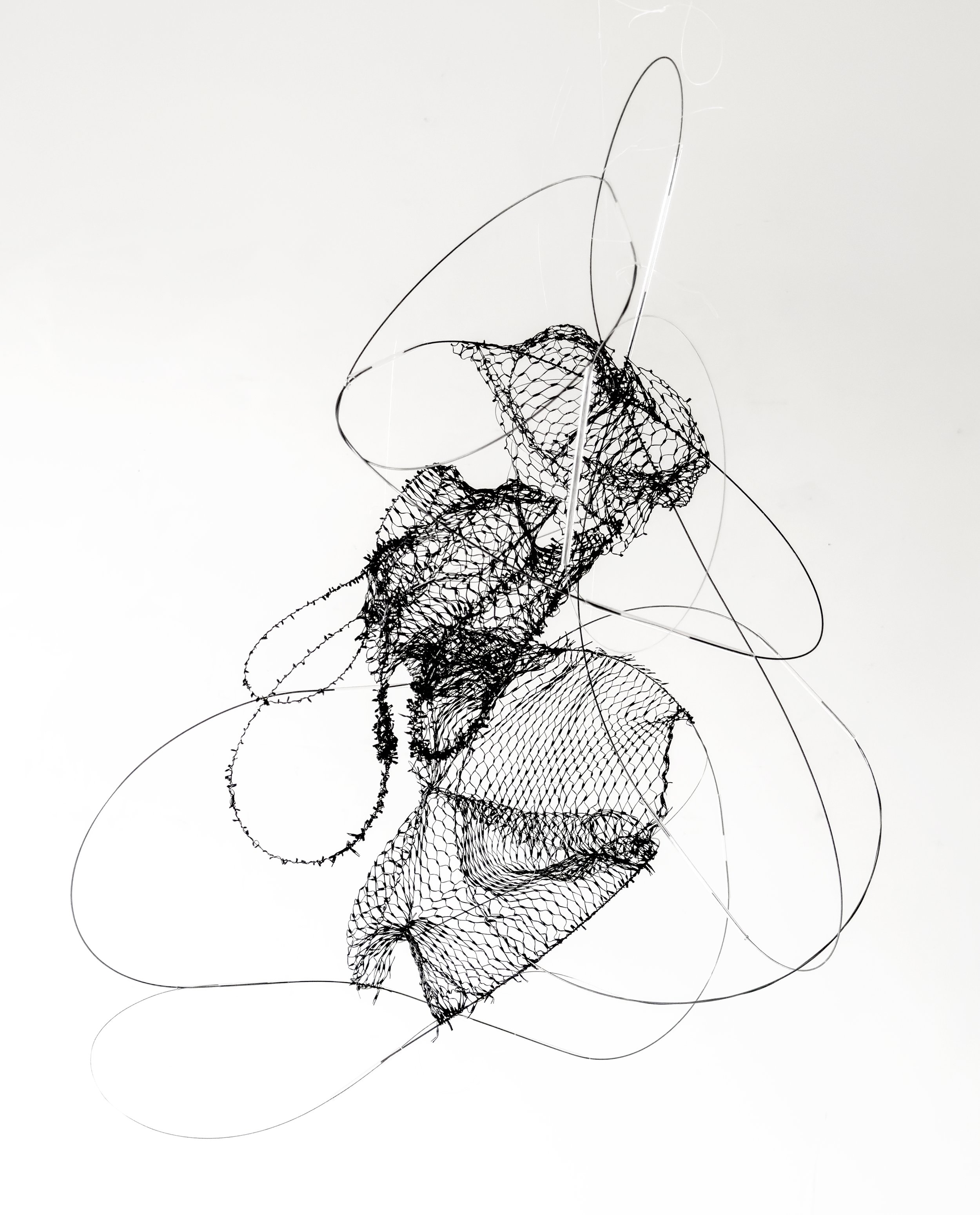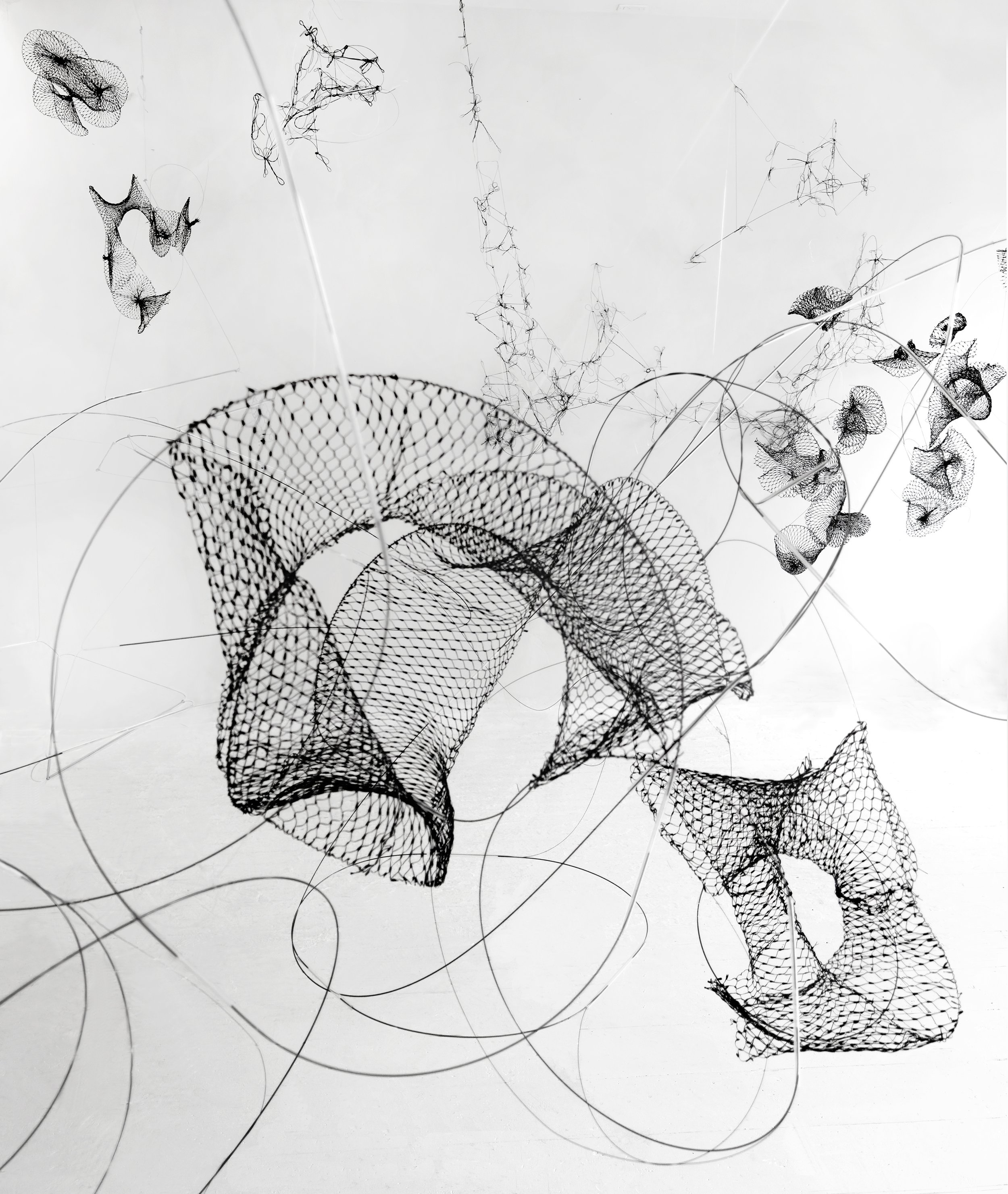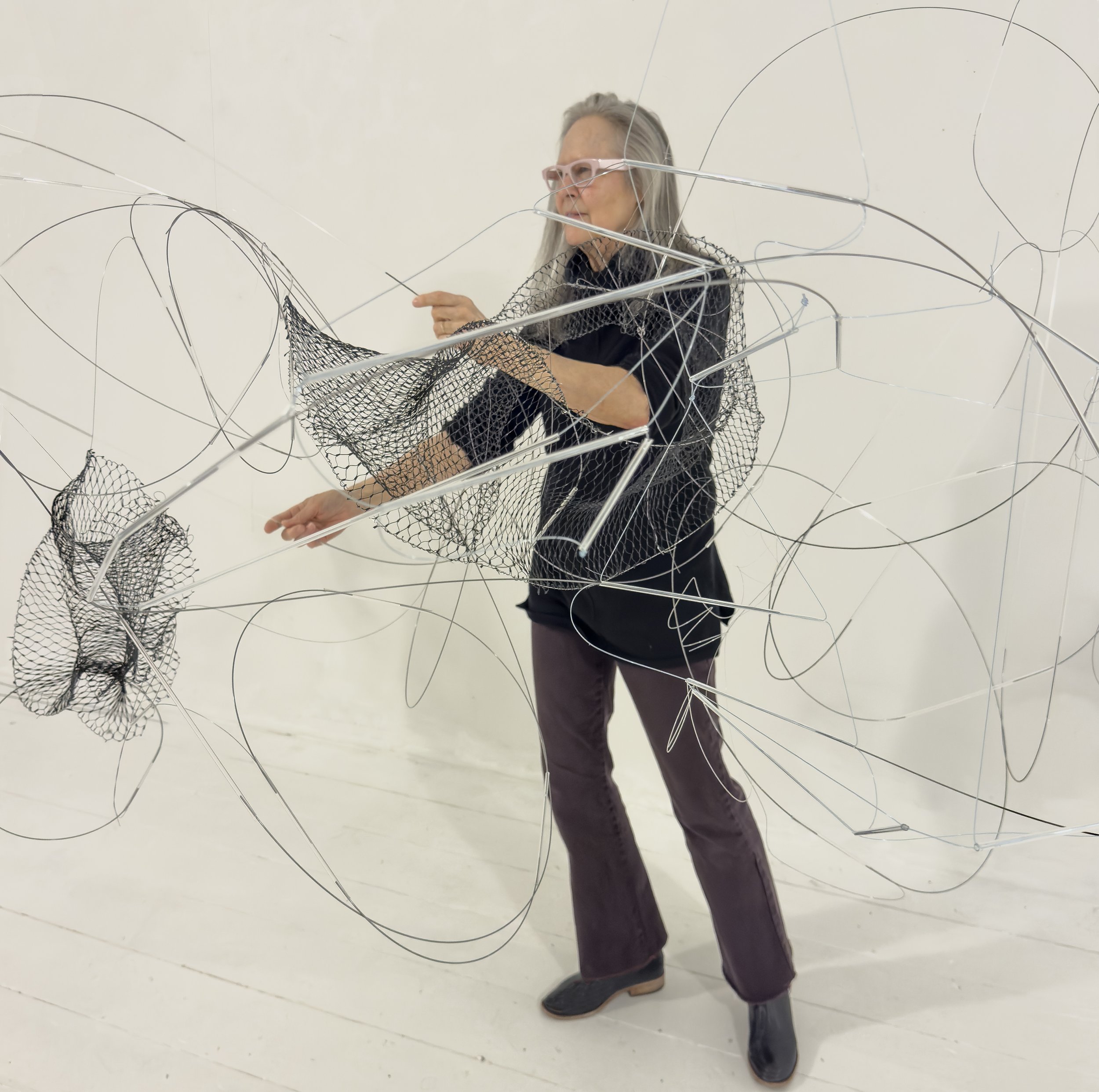Caroline Cox is a multimedia artist who works with spatial dynamics to connect the external world with our internal experience. She activates the natural phenomena that surround us, creating tension by manipulating spring steel, gravity, refracted light, and other processes based in the physical world. The work is made of translucent materials that are suspended in space, creating kaleidoscopic effects as light passes through a string of lenses or bounces off the glass tubes used in laboratories. Like a scientist conducting quirky research in torque and texture, Cox investigates the tensile properties of her materials, pushing them beyond their normal capacities to find their highest form of expression. Indeed, the unorthodox sculptures and installations have a scientific vibe, as if Cox is exploring the effects of friction, gravity, and movement in a controlled environment. Once we recognize that its construction depends solely on physics (no glue, no duct tape), we experience the work’s energetic presence and radiating properties. By interacting with the processes that govern the planets and solar systems, we become an integral part of the piece, held together by the same invisible forces. The constant motion, vibration, and mutating light creates its own gravitational pull, drawing us into the present moment again and again. This experiential aspect is the essence of Cox’s work, and a large part of her practice is devoted to configuring her materials in new ways that allow her to see something fresh and compelling. Cox’s absorption in her process is as dynamic as the natural forces that it engages, and we’re drawn into its orbit by sheer curiosity. There are many layers in the work, some revealed and some veiled, as Cox weaves her private memories and associations into the fabric and forces of the physical universe.
Caroline Cox
